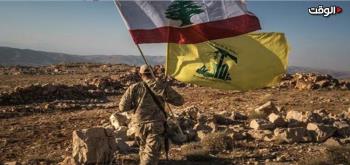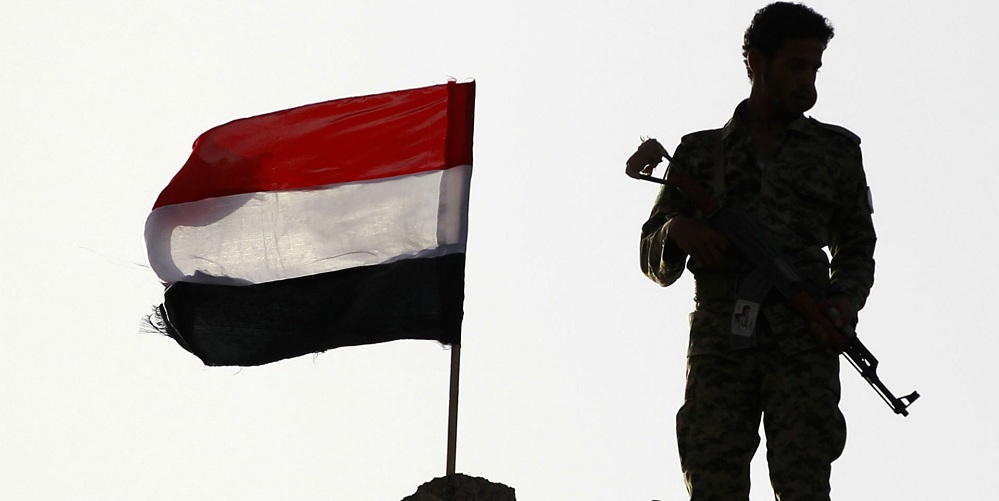Alwaght- After seizing control of southern Yemen and almost taking control of Shabwa province last month, the UAE-backed Southern Transitional Council (STC) is breaking its commitments in agreements with other political parties and under a new scenario is eyeing capture of two more provinces that are economically weighty.
The eastern provinces of Hadhrahmaut and Al-Mahrah are subject to new plans by the UAE and its proxies under the broader policy of taking control of Yemen’s strategic ports and airports.
While the UAE today controls the ports of Yemen directly or indirectly through its militias in Aden, Taiz, Hadhrahmaut, Socotra Island and Shabwa, this time it stepped in Al-Mahrah on the border with Oman under the cover of investment in one of the country’s ports.
In the last day of 2022, the government of Aden approved a $100 million contract with the UAE to build a new sea port in Ras Sherwin area of Al-Mahra.
According to the Reuters, the new port will be dedicated to trade and mining activities in the province.
The news agency, quoting a government official, reported that the contract with the Emirati company “AQAM” for the construction of a sea port in Ras Sherwin includes the construction of a port consisting of a cape of several levels, a 1000-meter breakwater, and a 300-meter pier.
Also, this port is dedicated to the export of ore and other minerals in addition to hosting containers.
Public opposition
The news of the agreement infuriated the Yemenis, especially people of Al-Mahrah who argue that it is a key to official entry to the province of the Emiratis whose colonial agenda in other provinces is now clear to all.
“People of Al-Mahrah foiled a big international oil pipeline project. What about Al-Qishan port project?,” Anis Mansour, a Yemeni journalist, said in a Facebook post.
The journalist named the Yemeni ports under control of the UAE or its proxies: Aden, Mukha, Mukalla, Al-Dhaba, Bi’r Ali, Bilhaf, Radum, Dhubab, Al-Khukha, Al-Khuba, Qana, and Al-Nashima.
For its part, the ‘Sit-in Committee’ in Al-Mahrah, through its spokesman Ali bin Mohammad, condemned the approval of the contract for the construction of Al-Qishan port in Al-Mahrah, adding :“We categorically reject this vague decision.”
The Sit-in Committee is a movement of political and civil activists against the presence of the Saudi-led coalition, which was formed in Al-Mahrah in 2016 and has been actively opposing Riyadh’s policies and its control over Sarfit and Nishtun ports and Al-Ghaydha international airport.
Also, the political activist Ali al-Mahri argued that unilateral contract is “constitutionally illegal.” He called UAE’s AQAM a “fake one” and this is an “obvious deception of Al-Mahrah people.”
Amir Shami, another political activist, suggested that Al-Qishan port project is for full Emirati control of the Yemeni ports.
Haboud Al-Mahri, another political activist, maintained that renting out Al-Qishan port to the Emiratis was part of the UAE occupation for a 50-year period.
“This is illegal and the free people of Al-Mahrah would not allow it,” he went on.
Political activist Maher Abdul Rahim al-Mahri in his interview with Al-Khalij Online noted that this contract is an obvious fraud and is aimed at plundering the resources of this province. He revealed that the Emirati company is a fake one established in 2017 by the UAE as a Saudi company with the aim of exploring the rich resources of Al-Mahrah.
Planning to seize Al-Mahrah and Hadhrahmaut
Al-Mahrah, which is the easternmost province of Yemen and is known as the eastern gate of the country, has a long border with Oman, and because of its distance from the center of Yemen, it has survived the damages of the battlefields. There is a considerable coastal plain and significant highlands, mountainous, and desert areas. This province also has a long coastline in the Arabian Sea and the Indian Ocean, which is nearly 560 kilometers long and can make a commercial gate for Yemen. The province also has significant mineral, agricultural, and aquatic resources, and beautiful landscapes and great investment opportunities lie in it. Also, the coalition’s concern about the smuggling of weapons and equipment from outside the borders to Sana’a has been one of the reasons for the aggression countries’ attempt to seize its control.
The plan to control Al-Mahrah was designed by the UAE since the beginning of war, as Abu Dhabi did in Aden and some other southern cities. UAE representatives entered this province in August 2015, just 4 months after waging the devastating war on Yemen, and claimed that the reason for their presence was to support the local authorities and maintain security in this important province.
In addition to Al-Mahrah, Hadhramout is another province that has found a key position in the new round of efforts by the UAE and its allied militias to expand territorial control. Hadhramout is the largest province of Yemen, it accounts for more than one-third of the country’s area (36 percent), and in addition to oil, mineral and fish wealth, it has a coastline of 450 kilometers.
Hadhrahmaut has a heavy political weight in Yemen’s future equations and can present an obstacle to projects aimed at separating the south from the north.
The transitional administration, assisted by the UAE, is seeking ways to destabilize these provinces and then find ways to dominate them. The ‘elite forces’ in Hadhramout have already seized control of mainly coastal areas. This presence takes place under the excuse of fighting terrorism and countering rise of Al-Qaeda and Muslim Brotherhood, an Islamist political group banned as a terrorist entity by Abu Dhabi and Saudi Arabia.
Yemeni political activist Ali Jaber in a conversation with Khalij Online believes that what is happening now in the east and southeast of Yemen is “only one of the steps that the UAE has taken years ago in order to control all the southern and eastern provinces and the coasts of Yemen.”
He continued that the UAE has underway a plan to empower the STC for controlling Al-Mahrah and Hadhrahmaut under the leadership of the STC chief Aidarus al-Zoubaidi who has been in the UAE for years.
Local sources have told Khalij Online that the UAE is stationing a team in Socotra Island whose main aim is toppling legitimate officials in Al-Mahrah. According to these sources, the UAE has allocated a budget of $2.72 million for Abdullah bin Issa bin Afrar, the militia commander of the STC in Socotra to repeat Socotra experience in Al-Mahrah. The strategic island of Socotra, which has traditionally been the bastion of Muslim Brotherhood-affiliated Islah Party, came under the control of the STC after the developments of 2018 and the rebellion of the southern forces against the government of fugitive President Mansour Hadi.
Actually, the STC militias are escalating the tensions in Al-Mahrah amid warnings by local officials about efforts to sink the province in violence and chaos.
Stepping up rivalry with Oman
The push by the UAE and its proxies to expand their control to Al-Mahrah, in turn, would lead to intensification of the competition with a traditional foreign actor, namely Oman, especially that Muscat has under its supervision the most important port of Al-Mahrah, an area on which the Emirati activities are focused.
Presence in Al-Mahrah through wide-ranging ties with its tribes and prominent figures is directly related to Oman national security interests and security of its western borders.
The rivalry of Oman and the UAE has a history older than Yemen developments. The UAE itself in the past was part of ancient Oman kingdom, namely before Britain redrew the borders of the Arab monarchies in the middle of the 20th century. The redraw of the regional borders set the foundation for lasting disputes, especially over the coastline that is 16 kilometers along the two countries’ borders. In 2005, the UAE started building a border wall along its border with Oman under the pretext of getting rid of the human and goods smuggling crisis, which also separates the border with Saudi Arabia.
But the calm that came after demarcating the borders between the two countries was lull before the storm, which the UAE started in the heart of Oman when Oman’s state television reported in late January 2011 that an “Emirati spy network” had been discovered in the country.
Still, the Emirati-Omani rivalry in Al-Mahrah has now taken another face. In addition to trying to have a proxy military presence, the UAE also pursues soft influence by sending thousands of tons of food and medicine aids to Al-Mahrah and helping local authorities rebuild Al-Mahrah police and security forces.
It is not unclear to Muscat that the Emirati activity in Al-Mahrah is meant to pave the way for future control of the province. Driven by this understanding, Oman responded by sending fuel, food, and medicine aids worth of $180,000 to the Yemeni province. Moreover, Oman granted citizenship to Al-Mahrah’s militant chief Sheikh Issa bin Afrar and Hayder Abu Bakr Al-Attas, the president and the prime minister of the first Yemeni national government after unification of the South and North in the early 1990s, along with about 69 members of their families.
Intensified rivalry in recent months even led to military saber-rattling. In August, Oman held military exercises, codenamed, Valley of Fire 2022, jointly with the US in the southern province of Dhofar. This rivalry is promoting concerns in Al-Mahrah about transfer of violence and chaos to this province.



























